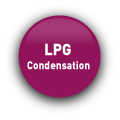 Indonesia
Indonesia English
English
 Indonesia
Indonesia English
English

We hope that every gas company can be extra careful in recruiting operational staff, specially not to hire any staff without experience in this industry. Those without proper certificate and experience will do things not in the proper way and will cause undesirable damages in the future. PT. Liqtro Sanurbali is more than just an LPG gas distributor, we take Safety very seriously and also prioritize cost efficiency for our customers.
PT. Liqtro Sanurbali would like to comment about the recent events of explosion caused by gas leakage, mostly from the 3kg cylinders. There is a fact that the public should know about these explosions. PERTAMINA has done accurate measurements on cylinder steel material and it's resistance against pressure. The steel material used in a 3kg gas cylinder by PERTAMINA can tolerate up to six times of its working pressure, more than enough to comply with the international safety standards.
Regardless the fact, here are some valuable tips that you can practice to avoid gas cylinder explosion:
There isn't any equipment that can be attached to your 50kg cylinder installation that can avoid gas condensation. The key is to balance up gas calories usage with its supply.
LPG vaporizer used in factories, hotels, restaurants, and every field at which LPG is supplied by bulk size tanks. The electrical resistance provides LPG to evaporate by heating the water in the vaporizer up to 70°C. LPG is vaporized by having that hot water flowed through the vaporizer.
Condensation can be reduced by having your gas installation placed in an area with a warmer temperature level.
Calculating your gas calories and choosing the sufficient LPG supply is one of the most important thing to do before going to installation stage. Not just about having enough gas volume in your tank, you would also need to have sufficient pressure to push the LPG out to your appliances. For example to choose a 50kg cylinder to cover various applications in your medium size restaurant would be an insufficient supply and will cause condensation to happen. It is caused by insufficient pressure in the tank, it is not strong enough to push out the gas out. The solution is to have an installation of five or more cylinders, supplying gas in the same time.
Liquefied petroleum gas (LPG), is the generic name for propane and butane gas. They are both a mixture of hydrocarbon gases used as a fuel in heating appliances and vehicles, and increasingly replacing chlo rofluorocarbons as an aerosol propellant and a refrigerant to reduce damage to the ozone layer.
This is because these gases liquefy under moderate pressure and they readily vaporize upon release of pressure. At normal temperatures and pressures, LPG will evaporate. Because of this, LPG is stored in steel tanks. In order to allow for thermal expansion of the liquid gas, these tanks are filled between 80% and 85% of their capacity. The ratio between the volumes of the vaporized gas and the liquefied gas varies depending on composition, pressure and temperature, but is typically around 250:1. LPG is heavier than air, and thus will flow along floors and tend to settle in low spots, such as basements.
LPG is manufactured during the refining of crude oil, or extracted from oil or gas streams as they emerge from the ground. LPG is either delivered by sea tanker or piped in from offshore gas fields.